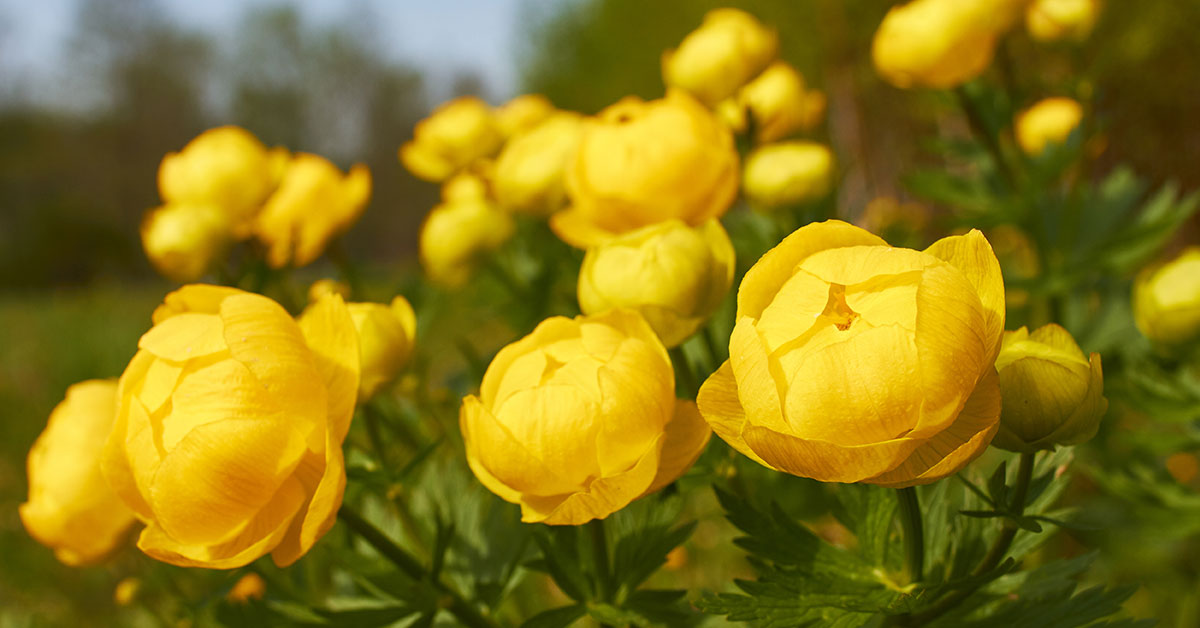In the realm of blossoming beauties, few flowers command attention quite like the globe flower (Trollius). With their enchanting spherical blooms in vibrant hues, globe flowers captivate gardeners and admirers alike.
In this comprehensive guide, we embark on a journey into the world of growing globe flowers, uncovering the secrets to cultivating these captivating plants in your own garden. From selecting the perfect site to providing the optimal care, we explore the art of nurturing globe flowers and harnessing their stunning charm.
What is a Globe Flower?
A globe flower, scientifically known as Trollius, is a genus of flowering plants belonging to the family Ranunculaceae. These herbaceous perennials are known for their eye-catching, globe-shaped flowers that resemble bright balls of color. Globe flowers are native to various regions in the Northern Hemisphere, including Europe, Asia, and North America.
The flowers of globe plants come in a range of vivid hues, including shades of yellow, orange, and sometimes even red. The petals are often large and rounded, giving them their distinctive globe-like appearance. The flowers are typically solitary or borne in small clusters atop tall, sturdy stems that rise above the attractive foliage.
Globe flowers are cherished for their unique shape, vibrant colors, and ability to brighten up gardens with their cheerful presence. Whether planted in borders, meadow gardens, or near water features, these captivating blooms add a touch of charm and visual impact to any outdoor space.
Where are Globe Flowers native?
Globe flowers (Trollius) are native to various regions of the Northern Hemisphere, including Europe, Asia, and North America. Here are some specifics about their native ranges:
- Europe: Several species of globe flowers are native to Europe, including countries such as the United Kingdom, France, Germany, Norway, Sweden, and Russia. They are often found in damp meadows, mountainous regions, and along riverbanks.
- Asia: Globe flowers are also native to parts of Asia, including China, Japan, Mongolia, and Siberia. They can be found in diverse habitats such as alpine meadows, wetlands, and forest clearings.
- North America: Some species of globe flowers are native to North America, particularly in regions such as Alaska, Canada, and the northern parts of the United States. They typically grow in wetlands, marshes, and along stream banks.
Regarding their invasive potential, globe flowers are generally not considered invasive plants. They do not typically exhibit aggressive spreading tendencies or disrupt natural ecosystems. However, it is worth noting that certain species or cultivars of globe flowers may have specific growth habits or adaptability that could make them potentially invasive in certain regions.
As with any plant, it is important to be mindful of local conditions and consult with local experts or agricultural extension services to determine the appropriate behavior and recommendations for specific globe flower species in your area.
While globe flowers are not typically classified as invasive, responsible gardening practices, such as preventing their escape into natural habitats and controlling their spread in garden settings, are always recommended to maintain the ecological balance of the surrounding environment.
How to grow Globe Flowers
Growing globe flowers (Trollius) can be a delightful addition to your garden, bringing their vibrant and distinctive blooms to brighten up your landscape. Here are some general guidelines for successfully growing globe flowers:
- Site Selection: Choose a suitable location for your globe flowers. They prefer moist to wet soil conditions and thrive in areas with partial shade to full sun, depending on the specific species and local climate. Ensure the soil is well-draining but retains moisture.
- Soil Preparation: Before planting, prepare the soil by incorporating organic matter, such as compost or well-rotted manure, to improve fertility and moisture retention. Globe flowers prefer slightly acidic to neutral soil pH levels.
- Planting: Plant globe flowers in early spring or fall. Dig a hole that is wide and deep enough to accommodate the root ball. Place the plant in the hole at the same level it was growing in its container. Backfill with soil, gently firming it around the roots.
- Watering: Globe flowers prefer consistently moist soil. Water them regularly, especially during dry periods or in hotter climates, to ensure the soil remains adequately moist. Mulching around the plants can help retain moisture and suppress weeds.
- Fertilizing: Apply a balanced, slow-release fertilizer in early spring to promote healthy growth. Follow the package instructions for proper dosage. Avoid excessive fertilization, as it may lead to lush foliage but fewer flowers.
- Maintenance: Deadhead spent flowers to encourage continuous blooming and prevent self-seeding, if desired. Regularly inspect the plants for pests or diseases and take appropriate action if necessary. Cut back the foliage after it dies back in late fall or early winter.
- Division: Every few years, divide overcrowded clumps of globe flowers to maintain their vigor. This is best done in early spring or fall. Lift the clump, carefully separate it into smaller divisions with healthy roots, and replant them at the appropriate spacing.
- Winter Protection: In colder climates, apply a layer of mulch around the base of the plants in late fall to help insulate the roots during winter.
By providing the right growing conditions, regular watering, and occasional division, you can enjoy the charming and colorful blooms of globe flowers in your garden. With their love for moist soil and preference for partial shade, they are well-suited for planting near water features, in rain gardens, or in areas with consistently moist soil.













